
Who discovered the new world? Here is our top 10 list of new world explorers, in countdown format:
10. Giovanni da Verrazza, (aka Giovanni da Verrazano or Jean de Verrazane)
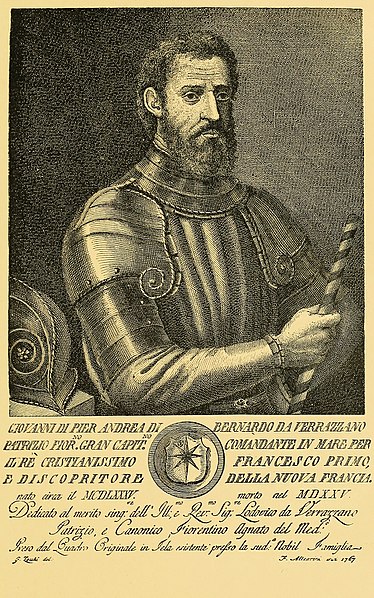
Giovanni da Verrazza, also known as Giovanni da Verrazano or Jean de Verrazane, was a French noexplorer who is best known for exploring the East Coast of North America on behalf of King Francis I of France in the early 16th century.
Verrazzano’s ships were called the “Dauphine” and “La Normande”.
Here are ten interesting and lesser-known facts about Giovanni da Verrazzano:
- Verrazzano’s voyages predated those of both Christopher Columbus and John Cabot.
- He was the first European to explore the New York Harbor and the Hudson River.
- Verrazzano’s expeditions were the first recorded European contact with the Lenape people, who were the indigenous inhabitants of the area that is now New York City.
- He also explored the coast of what is now North Carolina and South Carolina.
- Verrazzano was born in the Republic of Florence, Italy but he was in the service of France.
- He is honored by the Verrazano-Narrows Bridge in New York City, which connects Brooklyn and Staten Island, being named after him.
- Verrazzano’s expeditions helped France lay claim to the region, and he was given the title of “admiral of New France” by King Francis I.
- He never returned to Europe after his expeditions to the New World, and his fate is unknown.
- Verrazzano described the native people he encountered as “gentle and without knowledge of what is evil”
- He is considered as the first known person to have described the American continent as a “New World”
9. Henry Hudson
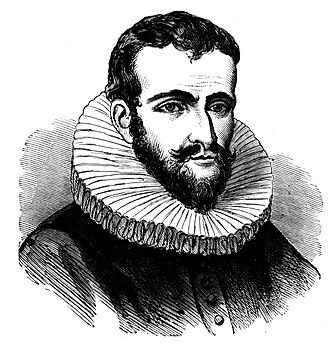
Henry Hudson was an English explorer who is best known for his explorations of the northeastern coast of North America and the Arctic on behalf of the English and Dutch governments in the early 17th century.
Hudson’s most famous ships were the “Half Moon” and “Discovery”.
Here are ten interesting and lesser-known facts about Henry Hudson:
- Hudson made four voyages to the New World, but none were successful in their intended objectives.
- His first voyage in 1607, was sponsored by the English Muscovy Company and aimed to find a northeast passage to Asia.
- His second voyage in 1608, was sponsored by the Dutch East India Company and aimed to find a northwest passage to Asia.
- Hudson’s third voyage in 1609, was sponsored by the Dutch East India Company and again aimed to find a northwest passage to Asia
- Hudson’s fourth voyage in 1610, was sponsored by the English East India Company and again aimed to find a northeast passage to Asia.
- He discovered the Hudson River and the bay which now bears his name.
- On his third voyage, Hudson and his crew mutinied and set Hudson, his son, and several loyal crew members adrift in a small open boat, never to be seen again.
- He never reached Asia but his expeditions mapped the northeastern coast of North America and the Arctic.
- Hudson’s voyages were some of the first European contact with the Lenape people, who were the indigenous inhabitants of the area that is now New York City.
- He is honored by the Hudson River, Hudson Bay, Hudson Strait, and the Hudson River Valley in New York state all being named after him.
8. Samuel de Champlain
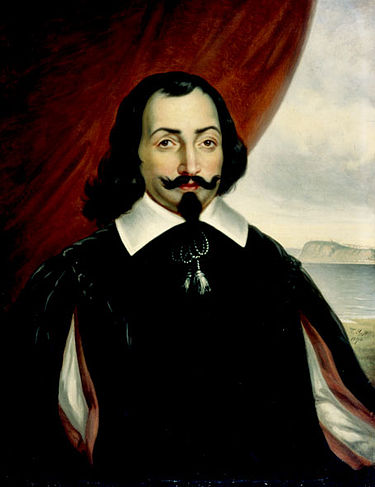
Samuel de Champlain was a French explorer, navigator, cartographer, and soldier who is best known for his explorations of the northeastern coast of North America and the Great Lakes region on behalf of the French government in the early 17th century.
Champlain’s most famous ships were the “Don de Dieu” and “Le Grand Navire”.
Here are ten interesting and lesser-known facts about Samuel de Champlain:
- Champlain was also known as “The Father of New France” because of his role in the development of the colony of New France.
- He made several voyages to the New World, starting in 1603 with the French explorer Francois Grave Du Pont.
- He was the first European to map and describe the lake that bears his name, Lake Champlain.
- Champlain was also the first European to document the existence of the Great Lakes and the Niagara Falls.
- He established the first permanent European settlement in Canada in 1608 at Quebec City.
- He is credited with the creation of the first accurate maps of northeastern North America.
- Champlain was also a skilled diplomat, and he formed alliances with the local indigenous peoples to help establish the French colony.
- He was also a skilled soldier, and he fought alongside the Algonquin and Huron people against the Iroquois.
- Champlain also wrote extensively about his experiences in the New World, including a book called “Les Voyages de la Nouvelle France occidentale” (The Voyages of New Western France)
- He died in Quebec City in 1635, and his remains are buried in the crypt of the Chapelle des Jésuites in Quebec City.
7. Jacques Cartier
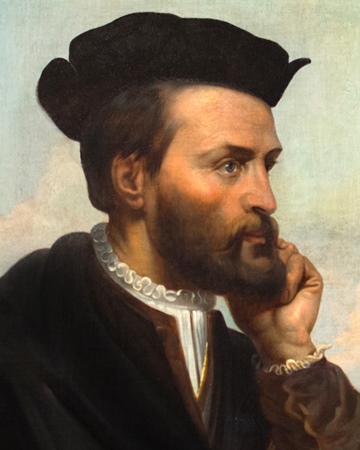
Jacques Cartier was a French explorer and navigator who is best known for his voyages to Canada on behalf of the French government in the mid-16th century.
Cartier’s most famous ships were the “Grande Hermine” and “Petite Hermine”.
Here are ten interesting and lesser-known facts about Jacques Cartier:
- Cartier made three voyages to Canada, in 1534, 1535, and 1541.
- His first voyage in 1534, was sponsored by King Francis I of France, with the goal of finding a passage to Asia through North America.
- On his second voyage in 1535, he explored the St. Lawrence River and discovered the site of present-day Montreal.
- He also claimed the territory of Canada for France and named it “New France”
- Cartier brought back samples of the valuable mineral, gold, but it was iron pyrite, a mineral that has a similar appearance to gold, but it is commonly called “fool’s gold”
- He was the first European to describe the St. Lawrence River and the Gulf of St. Lawrence.
- Cartier also encountered the Huron, Iroquois, and Algonquin tribes and established friendly relations with them.
- He is credited with the discovery of the present-day cities of Quebec City and Montreal.
- Cartier also brought back many specimens of plants and animals from Canada, including the white pine, which became an important resource for shipbuilding in France.
- Despite his voyages, Cartier failed to discover a passage to Asia, but his voyages did establish a French presence in Canada and set the stage for further exploration and colonization of the region.
6. Francisco Pizarro
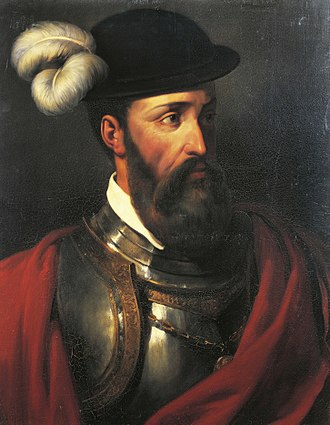
Francisco Pizarro was a Spanish conquistador who is best known for his conquest of the Inca Empire in South America in the 16th century.
Pizarro’s most famous ships were the “Marqués” and “San Juan”.
Here are ten interesting and lesser-known facts about Francisco Pizarro:
- Pizarro led the expedition that conquered the Inca Empire, one of the most advanced civilizations in the Americas at the time.
- He made three voyages to South America, in 1524, 1526, and 1530.
- Pizarro was born in Trujillo, Spain, and was the illegitimate son of a Spanish gentleman and a servant girl.
- He had very little formal education and was illiterate, he could not read or write.
- Pizarro was a brave and ruthless warrior who was not afraid to take risks.
- He is credited with the discovery of the present-day cities of Panama City and Lima.
- Pizarro and his men were able to defeat the Incas by using superior weapons, tactics, and by taking advantage of internal conflicts within the empire.
- After the conquest, Pizarro established the city of Lima as the capital of the new Spanish colony.
- Pizarro was also known for his cruelty towards the Incas, he ordered the execution of the Inca emperor Atahualpa, after he was captured.
- He died in Lima, Peru, in 1541, after being assassinated by the followers of his former partner and rival, Diego de Almagro.
5. Hernán Cortés
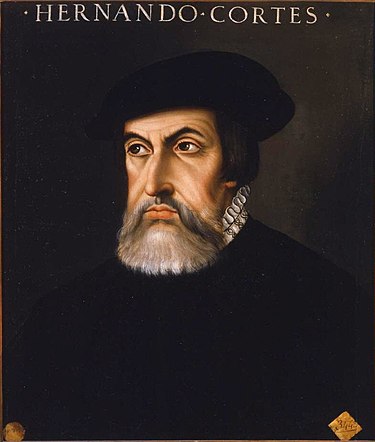
Hernán Cortés was a Spanish conquistador who is best known for his conquest of the Aztec Empire in Mexico in the 16th century.
Cortés’ most famous ships were the “Santa Maria de la Concepción” and “San Cristobal”.
Here are ten interesting and lesser-known facts about Hernán Cortés:
- Cortés led the expedition that conquered the Aztec Empire, one of the most advanced civilizations in the Americas at the time.
- He made one voyage to Mexico, in 1519.
- Cortés was born in Medellin, Spain, and was the son of a Spanish nobleman and a peasant woman.
- He was well-educated and fluent in several languages, which helped him communicate with the Aztecs.
- Cortés was a charismatic leader, who was able to gain the loyalty of many of the Aztecs.
- He is credited with the discovery of the present-day city of Mexico City.
- Cortés and his men were able to defeat the Aztecs by using superior weapons, tactics, and by taking advantage of internal conflicts within the empire.
- After the conquest, Cortés established the city of Mexico City as the capital of the new Spanish colony.
- Cortés was also known for his cruelty towards the Aztecs, he ordered the execution of the Aztec emperor Moctezuma, after he was captured.
- He died in Seville, Spain, in 1547, and is buried in the Convent of San Francisco in Seville.
4. Ferdinand Magellan
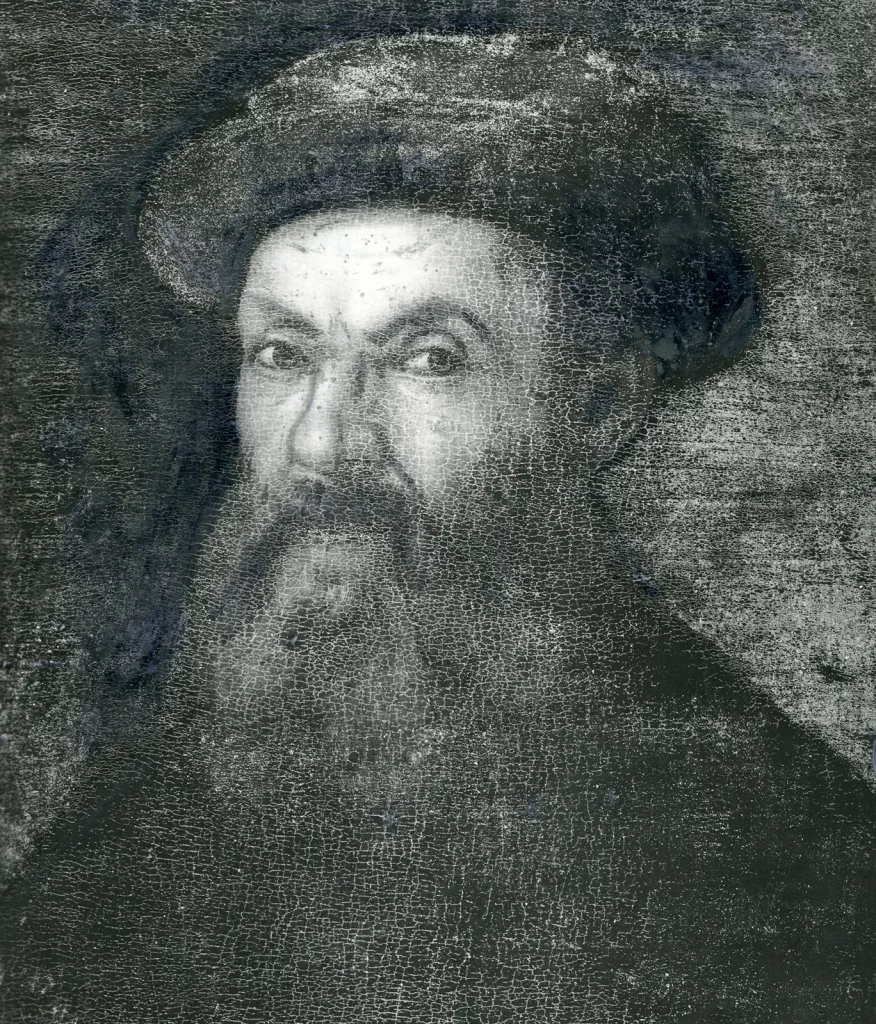
Ferdinand Magellan was a Portuguese explorer who is best known for leading the first expedition to circumnavigate the Earth in the early 16th century.
Magellan’s most famous ships were the “Trinidad”, “Victoria”, “Concepcion”, and “Santiago”.
Here are ten interesting and lesser-known facts about Ferdinand Magellan:
- Magellan’s expedition set sail from Spain in 1519, with the goal of finding a westward route to the Spice Islands of Indonesia.
- He was the first European to cross the Pacific Ocean, and he was also the first to prove that the Earth is round by circumnavigating it.
- He was born in Sabrosa, Portugal, and was the son of a nobleman and a peasant woman.
- Magellan had a rough childhood and was sent to live with a relative, who was a priest, at a young age. He learned Latin, which helped him later in his voyages.
- He was a skilled navigator, and he was able to calculate his longitude by observing the position of the stars.
- Magellan’s expedition encountered many challenges, including storms, mutinies, and hostile native peoples.
- Only 18 men returned to Spain out of the original crew of about 270 men, and only one ship, the Victoria, completed the voyage.
- He named the Pacific Ocean, “Mar Pacifico” which means “Peaceful Sea”
- Magellan was killed in the Philippines in 1521, during a battle with a local chieftain.
- His expedition was the first to circumnavigate the Earth, and it proved that the Earth is round and opened the way for further exploration and trade between Europe and Asia.
3. Vasco da Gama
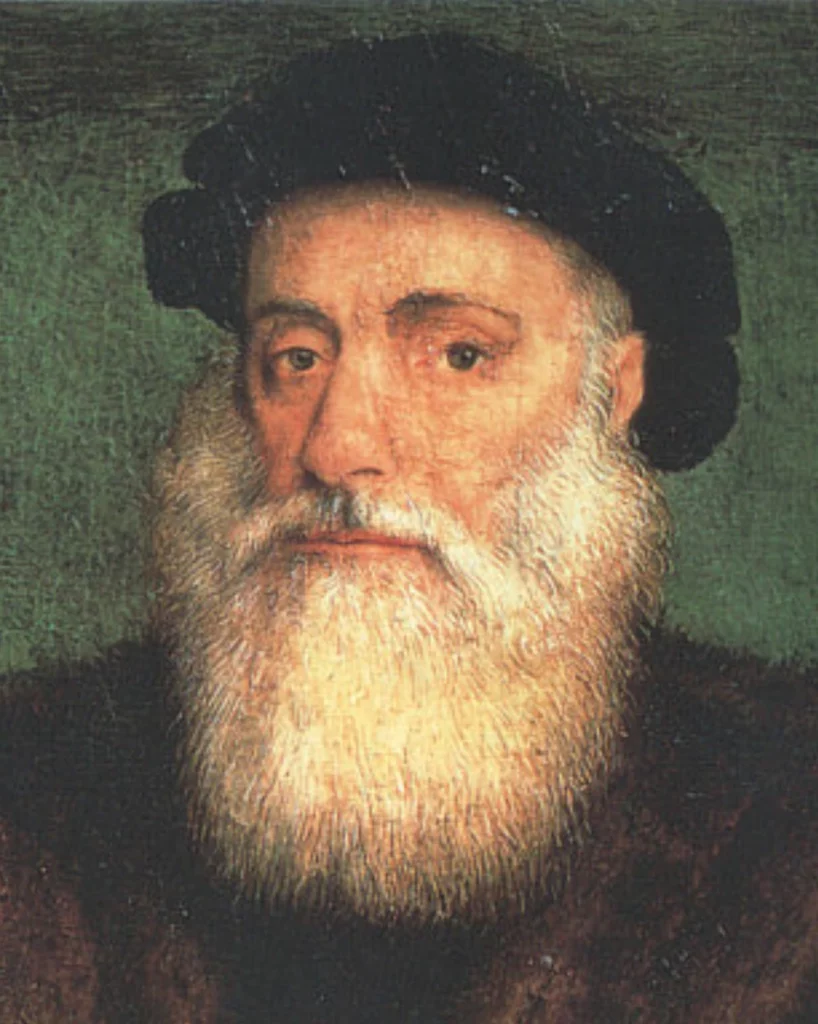
Vasco da Gama was a Portuguese explorer who is best known for being the first European to reach India by sea, in the late 15th and early 16th centuries.
Da Gama’s most famous ships were the “São Gabriel” and “São Rafael”.
Here are ten interesting and lesser-known facts about Vasco da Gama:
- Da Gama’s expedition set sail from Lisbon, Portugal, in 1497, with the goal of finding a sea route to India.
- He was the first European to reach India by sea, and he opened the way for the spice trade between Europe and Asia.
- He was born in Sines, Portugal, and was the son of a nobleman and a peasant woman.
- Da Gama had a rough childhood and was sent to live with a relative, who was a priest, at a young age. He learned Latin, which helped him later in his voyages.
- He was a skilled navigator, and he was able to calculate his longitude by observing the position of the stars.
- Da Gama’s expedition encountered many challenges, including storms, mutinies, and hostile native peoples.
- He established a factory in Calicut, India, which became the main center for the Portuguese spice trade with the East.
- He was appointed as the Governor of Portuguese India by King Manuel I
- Da Gama made two more voyages to India, in 1502 and 1524.
- His voyage was a major achievement in the Age of Exploration, and it opened the way for further exploration and trade between Europe and Asia.
2. John Cabot (aka Giovanni Caboto)
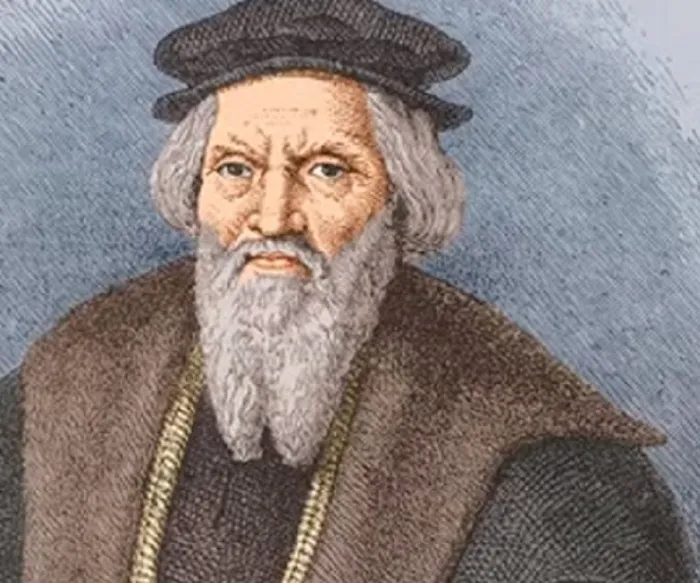
John Cabot, also known as Giovanni Caboto, was an Italian explorer who is best known for his voyages to North America on behalf of the English government in the late 15th century.
Cabot’s most famous ship was the “Matthew”.
Here are ten interesting and lesser-known facts about John Cabot:
- Cabot’s expedition set sail from Bristol, England, in 1497, with the goal of finding a new route to Asia.
- He was the first European to explore the coast of North America, since the Norse voyages of Leif Erikson around 1000 AD.
- He was born in Genoa, Italy, and moved to Venice, where he became a citizen and worked as a trader and navigator.
- Cabot had a rough childhood and was sent to live with a relative, who was a priest, at a young age. He learned Latin, which helped him later in his voyages.
- He was a skilled navigator, and he was able to calculate his longitude by observing the position of the stars.
- Cabot’s expedition encountered many challenges, including storms, mutinies, and hostile native peoples.
- He is credited with the discovery of present-day Canada and Newfoundland.
- Cabot made a second voyage in 1498, but the outcome of the voyage is uncertain, and Cabot himself disappeared.
- His expedition is considered as one of the most important in the Age of Discovery, it helped to establish England’s claim to North America and opened the way for further exploration and trade in the region.
- He is honored by the Cabot Strait, Cabot Tower, and Cabot Trail all being named after him.
1 Christopher Columbus
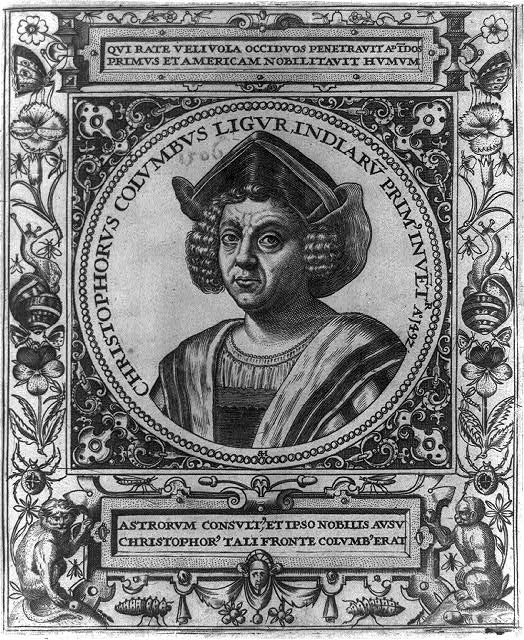
Christopher Columbus was an Italian explorer who is best known for his voyages across the Atlantic Ocean, sponsored by the Catholic Monarchs of Spain, in the late 15th and early 16th centuries, in which he completed four voyages across the Atlantic Ocean, opening the way for the widespread European exploration and colonization of the Americas.
Columbus’ most famous ships were the “Santa Maria”, “Pinta”, and “Niña”.
Here are ten interesting and lesser-known facts about Christopher Columbus:
- Columbus made four voyages to the New World, in 1492, 1493, 1498, and 1502.
- He was the first European to reach the Caribbean, Central America, and South America, although he never set foot on the mainland of North America.
- He was born in Genoa, Italy, and moved to Lisbon, Portugal, where he worked as a trader and navigator.
- Columbus had a rough childhood and was sent to live with a relative, who was a priest, at a young age. He learned Latin, which helped him later in his voyages.
- He was a skilled navigator, and he was able to calculate his longitude by observing the position of the stars.
- Columbus’s expedition encountered many challenges, including storms, mutinies, and hostile native peoples.
- He is credited with the discovery of the Caribbean, Central America, and South America, although the lands had already been inhabited by indigenous peoples for thousands of years.
- Columbus made a fourth voyage in 1502, but it was a failure and he returned to Spain in 1504, where he died in 1506.
- He brought the first enslaved people from the Caribbean to Spain, and his expeditions set the stage for the widespread exploitation and enslavement of the indigenous peoples of the Americas.
- Columbus’ voyages are widely considered as one of the most significant events in world history, as it marked the first successful European navigation of the Atlantic Ocean, and the discovery of the New World.
